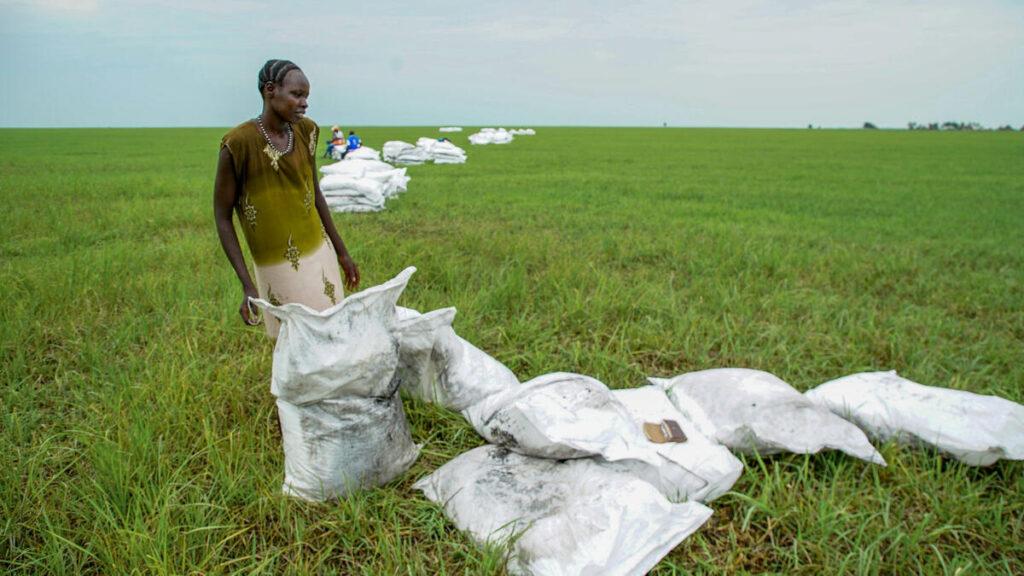The United Nations World Food Programme (WFP) announced on Tuesday that it has reached over two million people with life-saving assistance in South Sudan so far this year. However, a severe funding shortfall threatens ongoing support, placing millions at risk of losing aid.
According to a WFP operational update, half the population of South Sudan, 7.7 million people, are facing severe hunger. Of these, 83,000 people are facing catastrophic levels of hunger (IPC5) – the highest classification of food insecurity.
WFP Deputy Executive Director and Chief Operating Officer, Carl Skau, visited South Sudan from 17 to 20 July and said the scale of the humanitarian needs in South Sudan is staggering.
“But the scale of suffering here does not make headlines,” he stated. “Whether it is families trapped every year by flooding in Unity state or others trapped by conflict in Upper Nile state – millions of mothers, fathers, and children spend each day fighting hunger to survive.”
WFP says that 32,000 people in Upper Nile State, where fierce fighting since March has displaced thousands and severely limited humanitarian access.
“Nasir and Ulang counties in Upper Nile are at risk of deteriorating into famine. 39,000 have returned to South Sudan fleeing conflict in Sudan,” the update said. “A record 2.3 million children are at-risk of malnutrition – with conflict areas in Upper Nile and flood-affected areas such as Bentiu among the most impacted.”
However, WFP said progress has been achieved where conditions allow for humanitarian access and that in Uror County, Jonglei state, all pockets of Catastrophic hunger (IPC5) were alleviated this year as WFP was able to consistently deliver assistance. In ten other counties where conflict and insecurity subsided, crop production increased – improving the food security situation.
WFP has supported two million of the most vulnerable people in South Sudan this year, including over 300,000 impacted by the escalation of conflict in Upper Nile. The agency said that in July, they conducted airdrops to access the most remote parts of the Greater Upper Nile region, including areas at risk of famine.
“To date, we have delivered 430 metric tons of food, and airdrops are ongoing to reach 40,000 people,” the update reads.
Vital river convoys on the White Nile River have resumed after access was granted for the first time in months due to fighting.
“WFP is here, providing whatever assistance we can, however we can. But rising needs and shrinking resources are forcing us to scale back, even in places where people are on the brink of famine,” WFP Deputy Executive Director and Chief Operating Officer Carl Skau said. “WFP has the expertise, the teams, and the capacity to deliver, even in the most remote and challenging environments, but without sufficient funding and a period of peace, our hands are tied. This is a country endowed with natural resources and a vibrant youthful population. It is time to unlock its full potential.”
The update, however, stated that severe funding shortfalls mean WFP can reach just 2.5 million people with regular assistance – only 30 percent of people facing severe hunger – across the country with emergency food assistance.
“WFP urgently requires US$274 million to maintain support for just the 2.5 million most acutely food insecure through the end of the year – providing only 50 percent rations to these communities in most cases,” WFP said. “Further reductions in rations and assistance will be necessary in September if additional funds are not urgently received. Limiting food aid to the most vulnerable families risks undoing recent fragile gains.”




